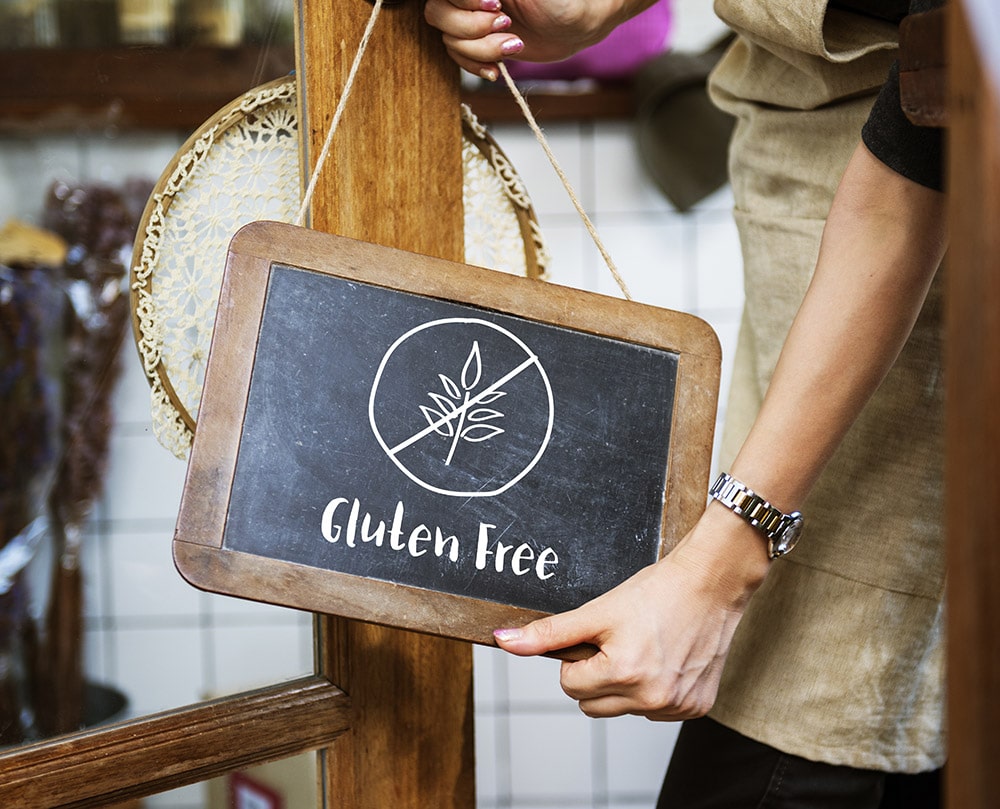Celiac disease is simply gluten intolerance. This is a digestive disorder caused by an abnormal immune response to gluten. It is a protein naturally found in grain products (rye, wheat, oats, barley). Sometimes gluten is an ingredient of drugs, vitamins or cosmetics. Celiac disease is characterized by the body’s inability to digest gluten. Some people have mild gluten intolerance, simply called gluten intolerance. Celiac disease, on the other hand, is a more severe form of intolerance and is an autoimmune disease. People with this condition must remove all gluten-containing foods from their diet. Fortunately, the problem has become quite common, also thanks to nutritionists and we have more and more “gluten free” products on the market.

Celiac disease – symptoms
Symptoms vary between children and adults. Most problems are related to the digestive system, but they can affect other parts of the body as well.
Celiac disease in children
Children with celiac disease can be more nervous and tire more quickly. Sometimes, smaller growth is also noticed in these children. Other symptoms include:
abdominal pain and bloating;
diarrhea or constipation;
vomiting;
bright and smelly stools;
weight loss.
Symptoms in adults
Adults also experience problems with the digestive system, but other parts of the body are more often affected. Symptoms include:
anemia;
seizures;
skin problems;
arthralgia;
bone fragility;
fatigue;
irregular menstruation;
numbness in the limbs;
tooth discoloration;
miscarriages;
skin rash.
About 20% of adults have dermatitis herpes, presenting with an itchy rash, bumps, and blisters. They can occur on the knees or buttocks.
Some people with celiac disease have no symptoms. However, long-term complications may still develop as a result of the disease.
Celiac disease – risk factors
The disease is more common in people with a family history of this condition. Also, people suffering from autoimmune diseases are more likely to suffer from this disease. Other conditions that increase the risk of developing celiac disease include:
lupus;
diabetes;
down syndrome;
rheumatism;
Turner syndrome;
thyroid disease;
lactose intolerance;
intestinal cancer;
intestinal lymphoma.
Diagnosis
Initial diagnosis follows a medical history and physical examination. The doctor may also order various types of tests to help with the diagnosis. Most often it is a blood test in which special antibodies are measured. People with celiac disease usually have high levels of EMA and tTGA antibodies. The tests should be carried out when gluten is still in the diet (or you can eat a gluten meal before the test).
The tests to diagnose celiac disease include a complete blood count and also tests for:
liver function;
cholesterol;
serum albumin;
the level of alkaline phosphatase.
If a person has skin symptoms, celiac disease can also be diagnosed by examining the skin under a microscope (biopsy).
Treatment
Treatment is based on complete removal of gluten. It is the only and effective treatment. If you don’t know how to eat gluten free, ask your doctor or talk to a dietitian. Nowadays, gluten-free nutrition is easy, because we can get gluten-free products in every supermarket.
What products should people with celiac disease watch out for?
Maintaining a gluten-free diet is not easy. Fortunately, many companies now produce gluten-free products that can be found at various grocery stores and specialty health food stores. A person with this disease should always read the packaging of products.
If you have celiac disease, it’s important to know which foods are safe. Here is a series of nutritional tips to help you determine what to eat and what to avoid.
Avoid the following ingredients:
wheat
spelled
rye
barley
triticale
bulgur
durum
flour
graham flour
semolina
Avoid unless the label says gluten-free:
beer
bread
cakes and pastries
candy
flakes
cookies
crackers
croutons
sauces
oat
pasta
processed meats, sausages and hot dogs
salad dressings
sauces (including soy sauce)
You can eat these gluten-free grains and starches:
buckwheat
maize
amaranth
arrowroot
corn flour
rice, soybean, corn, potato or bean flour
corn tortillas
Quinoa
rice
tapioca
Healthy, gluten-free foods include:
- fresh meat, fish and poultry that are not breaded, breaded or marinated
fruit
most dairy products
starchy vegetables such as peas, potatoes including sweet potatoes and corn
rice, beans, and lentils
vegetables
wine, distilled alcohols, ciders and spirits

